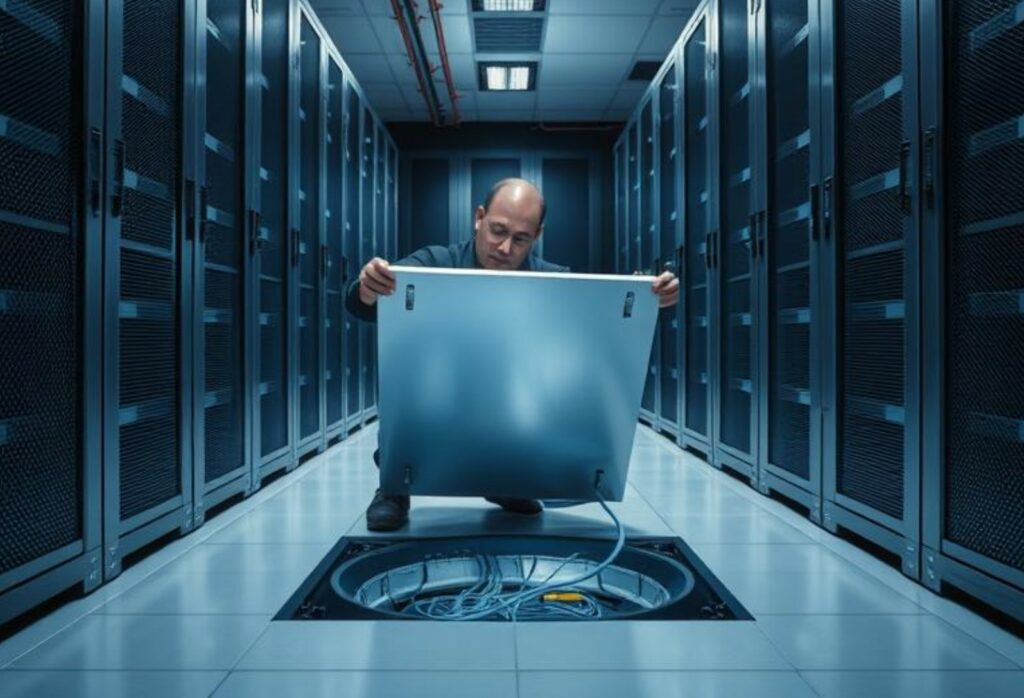
Jensen Huang, CEO of NVIDIA, has openly stated that the real winners in the AI boom, at least in the short to medium term, will be electricians, plumbers, and skilled craftsmen in general. Yes, those very same workers: the “blue-collar” workers who transform the megawatts and megadata of new data centers into reality.
A vision that clashes (and at the same time fits) with the other side of the coin: the growing fear of a speculative bubble in AI, which risks yet another “technological collapse” if the numbers don’t hold up to the impact of reality.
In the glossy narrative of AI, we often forget a material detail: without electrical capacity, cooling, carpentry, networking, and a construction site, nothing gets started. Huang makes it clear: hundreds of thousands of skilled professionals—electricians, plumbers, carpenters—will be needed to build “AI factories” around the world. It’s an almost counterintuitive message amid discussions about “white-collar automation,” but it’s terribly pragmatic: even before the models, we need to build the infrastructure. And that’s physical labor, skilled, well-paid, and… extremely scarce.
This isn’t an isolated outburst: the shortage of skilled craftsmen is a sore point that investors and big tech companies continue to highlight, even speculating that it will be the bottleneck for AI expansion. Meanwhile, several international media outlets have reiterated Huang’s own words, perfectly aligned with this narrative of a “jobs boom” driven by the explosion of data centers.
This is where my “personal approach” comes in. As a CISO, I see it every day: AI doesn’t replace everything, it recalibrates . The first impact is being felt by repetitive and document-based roles; where there is judgment, context, responsibility, and accountability, AI is a lever, not a substitute. The problem is that many companies mistake autopilot for a driving license : they invest in models and licenses, but not in change management, processes, metrics, and risk governance. This is how “easy cuts” among white-collar workers arise: from shortsighted, machine-centric strategies rather than the machine’s true superiority.
Huang, however, offers a compass: “AI won’t steal your job, but someone who knows how to use it will.” In other words: the skills hybridized by AI become a competitive advantage. Those who sit idly at their desk watching the flow pass by are ousting themselves. Those who learn to “talk” to models, design processes and controls, increase productivity and impact.
The second piece of news— the fear of an AI bubble —is the litmus test. There’s euphoria in the markets, endless storytelling, but behind some promises, there’s still a lack of recurring cash flows and sufficiently industrialized use cases . The article published on Red Hot Cyber outlines a climate of growing uncertainty: from admissions by industry leaders to concerns expressed by institutions and banks. Is it the same old story? Perhaps. But this time, the work is costly: we’re talking about mega-capex to fuel energy- and computation-hungry LLMs, with payback horizons that risk expanding.
If you want an engine room metaphor: we’re rushing to install one-meter-diameter pipes, but the downstream tanks aren’t yet sized to accommodate all that value flow. Meanwhile, in many Italian companies, I see the usual “basin under the drop” : they buy the trendy platform and say “we’ve got it,” without rethinking governance, security, processes, and integrations. Thus, the ROI evaporates and the bubble… inflates.
Let’s put it this way: data centers aren’t slides, they’re steel . This is where Huang’s prophecies and bubble fears intersect. If the skills to build and operate them are lacking, the supply chain slows down and computing supply remains rigid (high prices, bottlenecks). If, on the other hand, we build everything quickly but without risk engineering and security-by-design , the kill switch will come from operating costs, reliability blackouts, or worse, cyber incidents affecting MLOps models and pipelines.
The point, for those in the security field, is simple and uncomfortable: AI multiplies exposure and dependencies . Governance, auditing, access control, data traceability, model robustness, protection of the firmware and component supply chain (UEFI, BMC, telemetry), pipeline detection… if we don’t put these “bolts” in place while we’re assembling the system, the bubble won’t burst because of speculation: it will burst because it won’t hold up in production .
From here, I look at the Italian context with my usual pragmatism: we have a manufacturing and plant engineering tradition that can ride this renaissance of technical professions . Electricians, refrigeration engineers, cable technicians, network systems engineers, OT technicians: there’s real, well-paid work here, with modern career paths (think AI factories and edge campuses). But we need rapid training chains, apprenticeships worthy of 2025, public-private partnerships, and, let me tell you, less bureaucracy and more construction sites . What Huang describes isn’t science fiction: it’s a backlog that many Italian regions can address if they act now.
On the “bubble” front, however, the cure is the same: measure . KPIs and KRIs, not pitch decks. Adoption plans that start with processes and data, not demos. Integrated security and compliance , not last-mile patching. And above all, transparency on costs: energy, cooling, licensing, fine-tuning, retraining, latency, lock-in. The more boards demand numbers and accountability, the less room there is for rhetoric.
Let’s sum things up, without mincing words. Huang’s statement is a useful reminder: AI runs on physical infrastructure , and today the bottleneck is people with toolboxes and certified skills. This is good news for the real economy and for young people who want high-demand jobs without necessarily having to undergo four years of college.
On the other hand, the bubble isn’t avoided with slogans, but with execution and discipline: projects that generate measurable value , controls that hold up in production, investments supported by people, processes, and safety. If we build “steel and governance” together, AI stops being a house of cards and becomes a strategic asset. If, on the other hand, we continue to sell slides and buy dreams, then yes: between a screwdriver and yet another pitch, I’ll bet everything on the screwdriver. Because, in the end, bolts always hold better than balloons.
Follow us on Google News to receive daily updates on cybersecurity. Contact us if you would like to report news, insights or content for publication.
